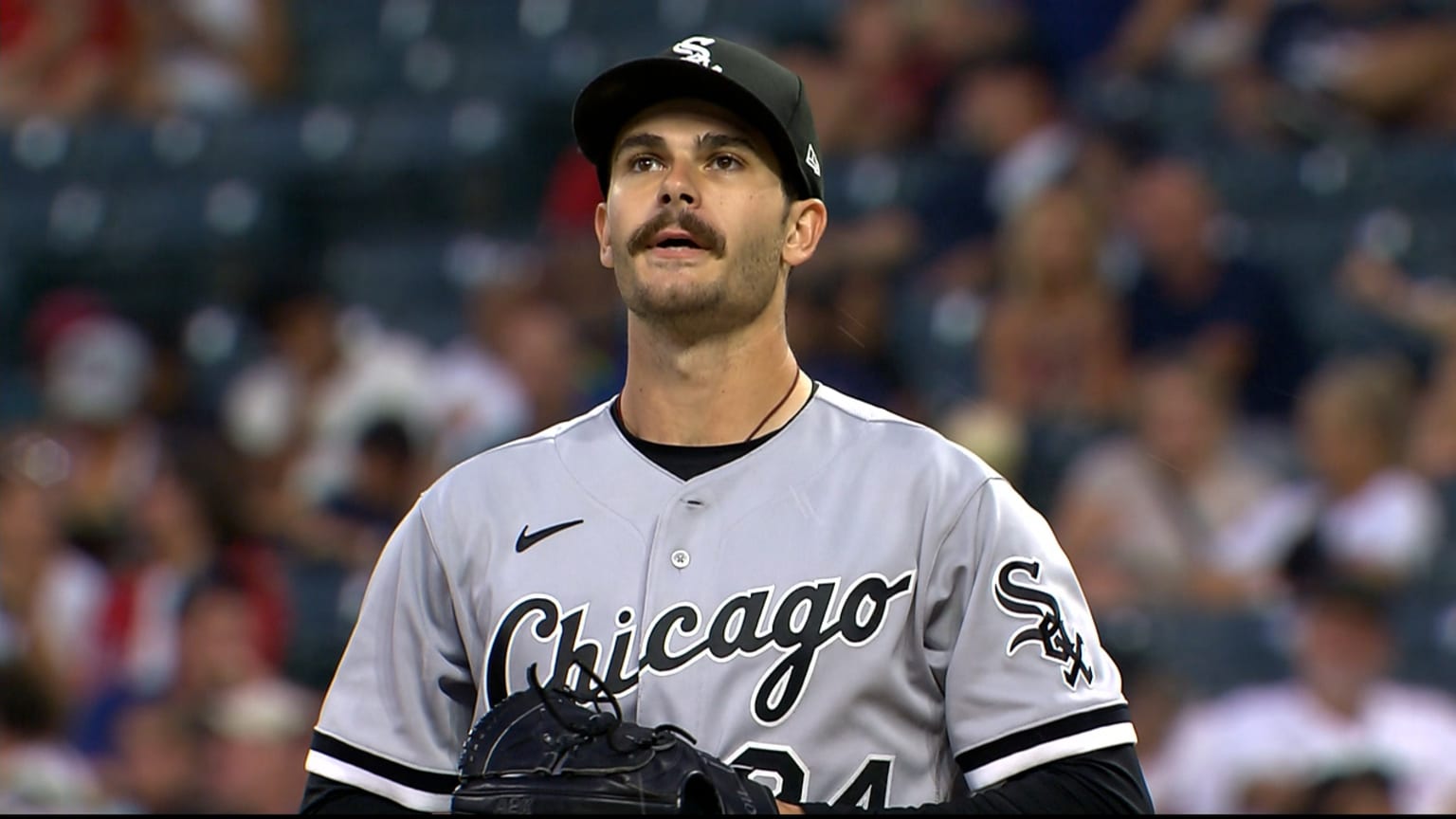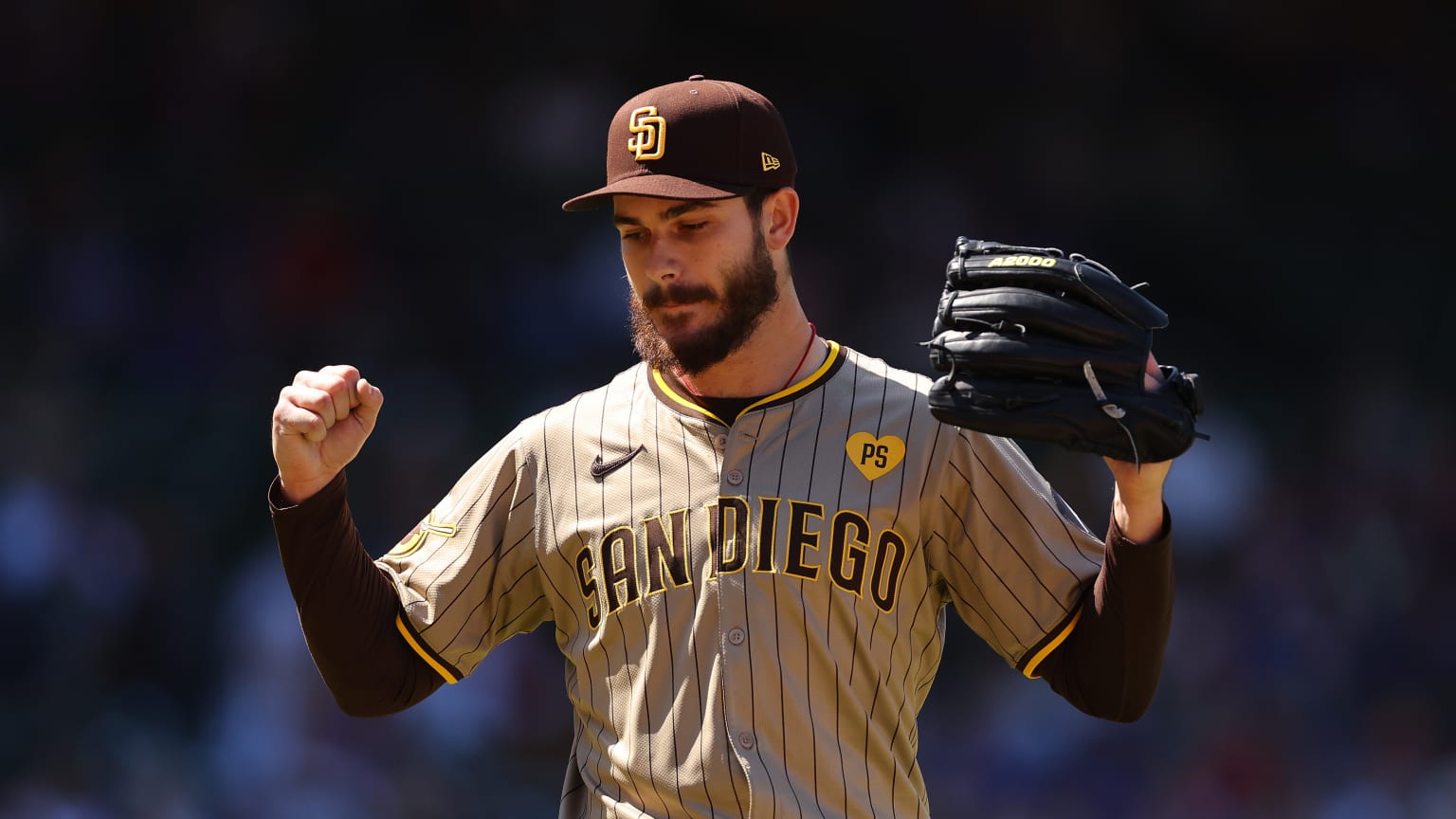When folks talk about top pitchers in baseball, a name that often pops up is Dylan Cease. People wonder, is that, really, a pitcher who can lead a staff? Does he have what it takes to be considered among the very best? That question, "Is Dylan Cease good?", tends to come up a lot among fans and those who follow the game closely.
There's a lot to think about when you're trying to figure out if a baseball player, especially a pitcher, is truly good. It's not just about one game or even one season; it's about consistency, growth, and what they bring to the team over time. Fans, fantasy baseball players, and even team managers are always trying to get a clear picture of a player's true ability, so, you know, this kind of question matters quite a bit.
This article will take a closer look at Dylan Cease's journey in baseball, what makes a pitcher stand out, and how he stacks up. We'll explore his pitching style, check out his performance over different seasons, and consider what the future might hold for him, too. It’s a way to get a better handle on his talent, apparently, and see if he truly fits the bill of a good pitcher.
Table of Contents
- Understanding Dylan Cease's Baseball Journey
- Personal Details and Career Snapshot
- What Makes a Pitcher "Good" Anyway?
- Key Metrics to Consider
- The Eye Test and Intangibles
- Dylan Cease's Pitching Style and Strengths
- His Fastball and Slider
- Command and Control
- Analyzing His Recent Seasons
- Highs and Lows
- Consistency and Development
- The Future Outlook for Dylan Cease
- Trade Talk and Team Impact
- Potential for Growth
- People Also Ask: Common Questions About Dylan Cease
- Final Thoughts on Dylan Cease's Talent
Understanding Dylan Cease's Baseball Journey
When we talk about "My text" as a reference, it's worth noting that the information provided to me speaks about Bob Dylan, the celebrated American folksinger and songwriter. His life, music, and career, which involved moving from folk to rock and infusing rock and roll lyrics with intellectualism, are fascinating. He's described as one of the greatest songwriters, with a storied back catalog, and his life in the early 1960s, culminating in the 1965 Newport Folk Festival, is quite well-known. However, that information, you see, is about the legendary musician, not Dylan Cease, the baseball player.
So, while Bob Dylan's contributions to music are immense, including fan favorites like "Forever Young" and "It’s All Over Now, Baby Blue," and his official songs are widely available, this discussion about "Is Dylan Cease good?" focuses on the talented pitcher in Major League Baseball. We'll be looking at his career on the mound, his pitches, and his impact on the game, which, you know, is a different kind of performance altogether. It's important to keep these two distinct individuals separate, even though they share a similar first name.
Dylan Cease, the baseball player, started his professional journey when he was drafted by the Chicago Cubs. He later moved to the Chicago White Sox as part of a trade that brought him to the big leagues. His path to becoming a starting pitcher in MLB has involved a lot of hard work and development through the minor league system, so, in some respects, his story is about rising through the ranks of professional sports. He has, apparently, made quite a name for himself since his debut.
Personal Details and Career Snapshot
| Detail | Information |
|---|---|
| Full Name | Dylan Cease |
| Born | December 28, 1995 |
| Position | Pitcher |
| Throws | Right |
| MLB Debut | July 3, 2019 |
| Current Team (as of early 2024) | San Diego Padres |
Dylan Cease, you know, is a right-handed pitcher who has spent several seasons pitching at the highest level of baseball. His career began with a lot of promise, and he has certainly shown flashes of truly dominant pitching. He’s someone who, typically, gets people talking when he steps onto the mound, which is a good sign for a pitcher.
He has, in a way, been a key part of his team's pitching staff, working through various ups and downs that are quite common for players in professional sports. His journey, like many athletes, involves continuous adjustments and efforts to improve his craft. That, too, is a big part of what makes him an interesting player to follow.
What Makes a Pitcher "Good" Anyway?
Deciding if a pitcher is "good" involves looking at more than just their win-loss record, you know. There are many different elements that contribute to a pitcher's effectiveness and overall value to a team. It's a complex blend of raw talent, skill, and the ability to perform under pressure, so, really, it’s about a lot of things coming together.
A good pitcher can control the game, limit the opposing team's scoring chances, and keep their own team in a position to win. They need a variety of pitches, the ability to throw strikes when it matters most, and the mental fortitude to handle difficult situations. These qualities, arguably, separate the average from the truly impactful pitchers in the game today.
Key Metrics to Consider
Baseball statisticians use several numbers to try and capture a pitcher's true value, you see. These metrics help us look past simple outcomes like wins and losses and focus on what the pitcher himself controls. It's a way to get a deeper sense of their performance, nearly, on a pitch-by-pitch basis.
One common measure is Earned Run Average (ERA), which shows how many earned runs a pitcher gives up per nine innings pitched. A lower ERA suggests a pitcher is better at preventing runs. However, it can be influenced by defensive play behind the pitcher, so, sometimes, it doesn't tell the whole story.
Then there's FIP (Fielding Independent Pitching), which tries to measure what a pitcher controls directly: strikeouts, walks, hit batters, and home runs. It takes out the impact of balls put in play, so, in some respects, it gives a clearer picture of a pitcher's individual skill. A low FIP is generally a strong indicator of a pitcher's ability.
Strikeouts per Nine Innings (K/9) tells you how many batters a pitcher strikes out on average in a game. Pitchers who get a lot of strikeouts are often seen as dominant because they don't rely on their defense as much. This number, you know, can really show a pitcher's ability to overpower hitters.
On the flip side, Walks per Nine Innings (BB/9) indicates how many batters a pitcher walks. Fewer walks mean better command and fewer free passes for the other team, which, typically, is a sign of a pitcher who knows where his pitches are going. Control, apparently, is a huge part of pitching success.
WHIP (Walks plus Hits per Inning Pitched) is another useful stat. It shows how many baserunners a pitcher allows per inning. A low WHIP means fewer people are getting on base against that pitcher, which is, obviously, a very good thing for a pitching staff. It’s a pretty straightforward way to look at how often a pitcher is letting batters reach base.
Finally, looking at things like Hard-Hit Rate helps us see how often batters are making strong contact against a pitcher's pitches. If a pitcher gives up a lot of hard contact, even if they're not always giving up hits, it might suggest that hitters are seeing the ball well. Keeping this number low, you see, is a sign of effective pitching that limits dangerous swings.
The Eye Test and Intangibles
Beyond the numbers, there's also what people call the "eye test," which is just watching a pitcher play, you know. Sometimes, a pitcher just looks good on the mound. They have a certain presence, a way of carrying themselves that suggests confidence and control. This feeling, more or less, can be just as important as the statistics.
Intangibles include things like a pitcher's poise under pressure, their ability to work out of jams, and their competitive spirit. Do they seem to get stronger when the bases are loaded? Do they shake off a bad pitch and focus on the next one? These are qualities that don't show up in a box score but are, very, very real to those watching the game. A pitcher's ability to stay calm and focused, apparently, can make a huge difference in tight situations.
A pitcher's ability to adjust during a game, to recognize what's working and what's not, and to change their approach on the fly is also a huge part of being good. This mental aspect of pitching, you know, is something that often separates the truly elite from the rest. It's about being a step ahead, virtually, of the hitters.
Dylan Cease's Pitching Style and Strengths
Dylan Cease is known for his powerful arm and his ability to generate swings and misses, so, really, that’s a big part of his appeal. He throws with a lot of force, which can be tough for hitters to deal with. His pitches tend to have a good amount of movement, making them harder to hit squarely, you know.
He has, typically, relied on a couple of pitches that really stand out in his arsenal. These are the pitches that, often, make hitters look foolish and contribute to his strikeout totals. Understanding these pitches helps us see why he can be so effective, especially when he’s on his game.
His Fastball and Slider
Cease's fastball is a significant weapon. It comes in at a high speed, which can overwhelm hitters, particularly when it's located well. He can throw it for strikes or use it to get batters to swing through it, especially up in the strike zone. The velocity, you know, is certainly a key part of his approach.
But perhaps his most talked-about pitch is his slider. This pitch has a sharp, late break that can make it look like a fastball until it suddenly darts away from the bat. It's a pitch that, very often, gets a lot of swings and misses, and it's a big reason why he racks up so many strikeouts. When that slider is working, apparently, he’s incredibly tough to hit.
The combination of a powerful fastball and a nasty slider gives him a strong one-two punch. Hitters have to guess which pitch is coming and prepare for different speeds and movements, which, obviously, makes their job much harder. This mix of pitches, you know, is a staple for many successful big-league pitchers.
Command and Control
While his stuff is electric, a pitcher's ability to put the ball where they want it, known as command, is crucial. Cease has, at times, shown excellent command, painting the corners and hitting his spots. When he's doing this, he's incredibly difficult to hit, so, you know, it’s a sign of a pitcher truly in control.
However, like many power pitchers, there have been moments where his control has wavered a bit. Walks can sometimes be an issue, which gives opposing teams free bases and can lead to bigger innings. Finding that consistent sweet spot between throwing hard and throwing accurately is, truly, a continuous process for any pitcher.
When he is hitting his spots and keeping the walks down, he looks like a top-tier pitcher, more or less. It's a balance, and when he finds it, his performance tends to be outstanding. His ability to limit walks and put away hitters with his strikeout pitches is, honestly, what makes him a pitcher with immense potential.
Analyzing His Recent Seasons
Looking at Dylan Cease's performance over his past few seasons gives us a clearer picture of his development and consistency. Baseball is a game of adjustments, and pitchers, you know, are always working to refine their approach. His journey has had some really high points and, as is common, some lower ones too.
There was a season, not too long ago, where he pitched at an elite level, getting serious consideration for major awards. During that time, his ERA was very low, and his strikeout numbers were incredibly high, so, you know, he was really putting it all together. That period, apparently, showed everyone just how good he could be.
Highs and Lows
That breakout season showed everyone what he could do when everything clicked. He was dominating lineups, and his pitches were nearly unhittable. That level of performance, you know, put him in conversations with the best pitchers in the league. It was a clear demonstration of his top-end potential.
However, like many pitchers, he has also faced periods where things weren't quite as smooth. There have been times when his command might have been a bit off, or when hitters seemed to figure him out for a stretch. These are the moments that, obviously, test a pitcher's ability to adjust and bounce back. Every player, after all, experiences these ups and downs.
The ability to work through these challenges and find his rhythm again is a big part of what makes a pitcher truly good over the long haul. It's not just about the dominant performances, but also about how they handle adversity. His response to these challenges, you know, speaks volumes about his character and skill.
Consistency and Development
Consistency is, arguably, one of the most important traits for a starting pitcher. Being able to go deep into games regularly and give your team a chance to win every time you pitch is incredibly valuable. Cease has shown periods of this consistency, especially during his best seasons, so, really, that’s a very positive sign.
His development has involved refining his pitches, working on his command, and learning how to pitch effectively even when he doesn't have his best stuff. This kind of growth is what teams look for in young pitchers, as it suggests a commitment to continuous improvement. He’s someone who, clearly, has put in the work
Related Resources:



Detail Author:
- Name : Mr. Van Fisher
- Username : megane06
- Email : verda.homenick@yahoo.com
- Birthdate : 1980-05-08
- Address : 354 Kunde Spring Wizaland, NH 55152
- Phone : +1.458.566.8943
- Company : Herman-Gibson
- Job : Network Systems Analyst
- Bio : Quo blanditiis alias voluptatem. Aut nobis nostrum voluptas nulla dicta omnis reprehenderit sunt. Perferendis natus sapiente doloribus sit. Assumenda officiis ut et dolorum eos.
Socials
instagram:
- url : https://instagram.com/nolan.senger
- username : nolan.senger
- bio : Nemo ut ut corrupti mollitia dolor harum. Deserunt et voluptas odio facilis ut dolorem.
- followers : 6933
- following : 320
facebook:
- url : https://facebook.com/nolan_senger
- username : nolan_senger
- bio : Non illum veniam delectus aspernatur quia. Est ex repudiandae molestias.
- followers : 483
- following : 287
twitter:
- url : https://twitter.com/nolan_id
- username : nolan_id
- bio : Vitae natus maiores beatae eaque sed. Cumque temporibus qui consectetur animi et. Quis sit cumque qui soluta ratione.
- followers : 2681
- following : 1015
linkedin:
- url : https://linkedin.com/in/nolan_real
- username : nolan_real
- bio : Voluptate numquam nulla quos.
- followers : 429
- following : 2078
tiktok:
- url : https://tiktok.com/@nolansenger
- username : nolansenger
- bio : Laboriosam vel optio omnis maxime quia voluptas.
- followers : 2288
- following : 587